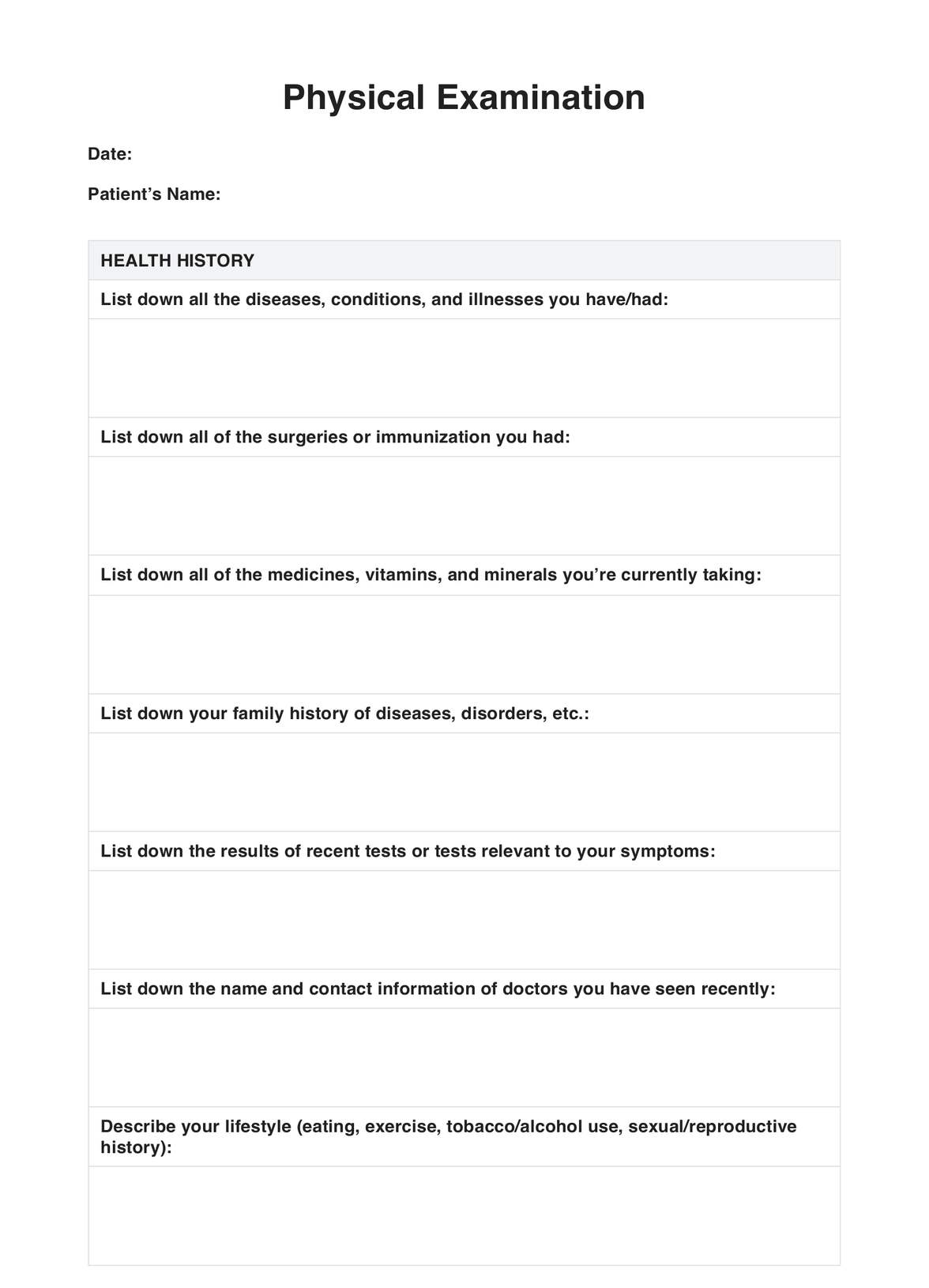Any practitioners can use the template for physical examinations. However, those who benefit from it the most are the physicians in charge of the patient and the practitioners responsible for patient intake.

Physical Examination
Keep records of your patient’s health on a physical examination template. Click here for a copy of our template and a guide!
Use Template
Physical Examination Template
Commonly asked questions
You can store your document by printing it and placing it in a dedicated drawer or right on Carepatron.
A physical examination assesses the physical health of a patient.
EHR and practice management software
Get started for free
*No credit card required
Free
$0/usd
Unlimited clients
Telehealth
1GB of storage
Client portal text
Automated billing and online payments











